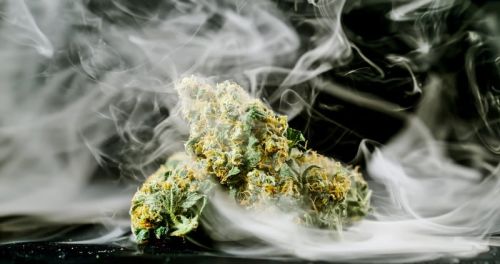The Aroma of Change: Minnesota Cannabis Law

The Legalization of Cannabis
In recent years, the legalization of cannabis has been a hot topic of debate and controversy in many states across the United States. As more states move towards decriminalization or even full legalization, questions arise regarding how this impacts law enforcement and their ability to search vehicles based on the odor of cannabis (i.e., marijuana [1]).
For Minnesotans, the recent decision in State v. Torgerson sheds some light on this issue. In this case, the Minnesota Supreme Court considered whether the odor of cannabis alone was sufficient to establish probable cause under the automobile exception to the Fourth Amendment's warrant requirement.
The automobile exception allows law enforcement to search a vehicle without a warrant if they have probable cause to believe that evidence of a crime will be found. However, the question in this case was whether the odor of cannabis ALONE was enough to establish probable cause.
It is worth noting that the facts presented in Torgerson predate the August 1, 2023, legalization of adult use in Minnesota under H.F. 100. During that time, per Minnesota state law, possession of cannabis was limited to low THC hemp products by adults age consumers, 21 or older, or medical cannabis by qualified patients under the state's medical program.
Changes in Minnesota Cannabis Law

How much evidence or circumstances, in addition to the mere presence of cannabis odor, is required to tip the scales toward probable cause under a totality of the circumstance's inquiry? Probable cause requires that the totality of the circumstances give rise to a fair probability that cannabis is being possessed or used in a criminally illegal manner.[2]
These additional supplementary details hinting at criminal activity may be as basic as those that suggest some degree of "suspicious behavior" on the part of the driver or passengers, such as being "illegally parked with heavily fogged windows" [3], or drivers and occupants who are "excessively anxious, perspiring, displaying delayed response times when questioned, or providing inconsistent accounts to law enforcement." [4] Therefore, although the scent of cannabis cannot be the sole factor to establish probable cause, the ability of officers to uncover other evidence or construe a driver or passenger's conduct as "suspicious" to fulfill a "fair probability" that cannabis is being "possessed or used illegally" is likely a relatively easy bar for law enforcement to satisfy to establish probable cause. In the end, the legal community must await another probable cause test case to gauge the necessary quantity and significance of the additional factors needed where the scent of cannabis is detected.
With Minnesota's August 1st legalization of adult-use under H.F. 100, adults, aged 21 and over, may now possess up to two ounces of cannabis flower on their person and two pounds at their residence. Therefore, if facts like those in Torgerson were relitigated today, the argument that cannabis odor alone is insufficient to support probable cause is much stronger under Minnesota's adult-use law.
The Cannabis Odor Law Enforcement Changes in Searches
In sum, the Torgerson decision is significant because it recognizes that the legalization and decriminalization of cannabis have changed the landscape regarding law enforcement searches. It acknowledges that the mere presence of cannabis or its odor does not automatically indicate criminal activity, an acknowledgment long overdue!
However, Minnesota cannabis consumers need to understand that driving under the influence and using cannabis in motor vehicles remains a crime under H.F.100. Additionally, the Torgerson decision only applies to Minnesota and, while persuasive, may not be binding in other states.
Overall, this case highlights the evolving nature of cannabis laws and how they impact law enforcement practices. As more states continue to legalize or decriminalize cannabis, it will be interesting to see how courts across the country address the issue of probable cause and the odor of cannabis in the context of vehicle searches.
FOOTNOTES:
[1] Marijuana is defined as "all parts of the plant of any species of the genus Cannabis." Minn. Stat. § 152.01, subd. 9 (2022). Industrial hemp is defined as "the plant Cannabis sativa L. and any part of the plant . . . with a delta-9 tetrahydrocannabinol concentration of not more than 0.3 percent on a dry weight basis." Minn. Stat. § 18K.02, subd. 3 (2022). For context, it is helpful for the Reader to understand that Marijuana and Industrial Hemp are part of the same species and that their odors are indistinguishable. Additionally, although the Torgerson ruling uses the term marijuana repetitively as a means for legal distinction, this Author deliberately employs the term cannabis, which is more precise for the article's subject matter and sidesteps the derogatory and discriminatory connotations associated with and origins of the term "marijuana".
[2] State v. Torgerson, p. 17.
[3] City of St. Paul v. Moody, 244 N.W.2d 43, 44 (Minn. 1976)
[4] People v. Zuniga, 372 P.3d 1052, 1057 (Colo. 2016).




